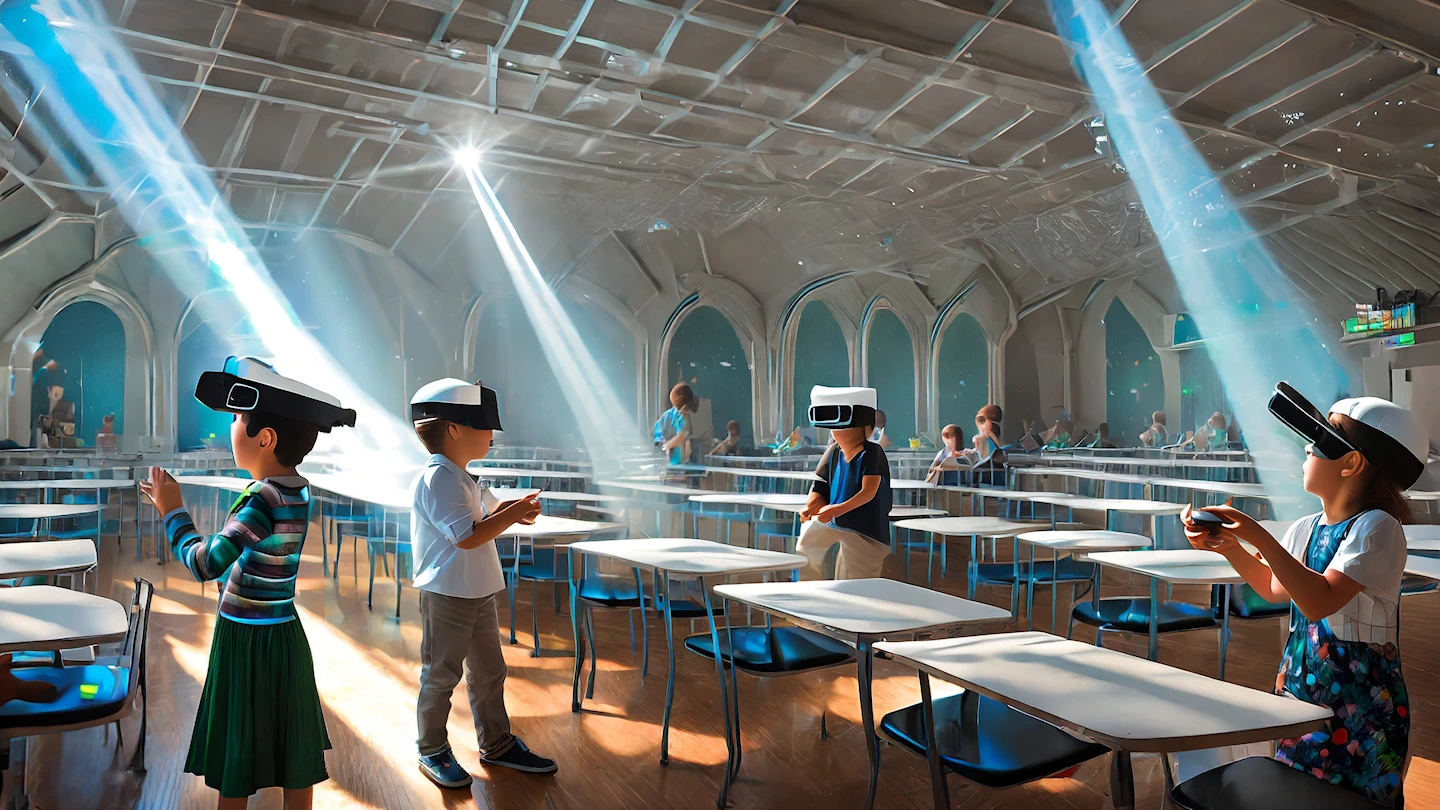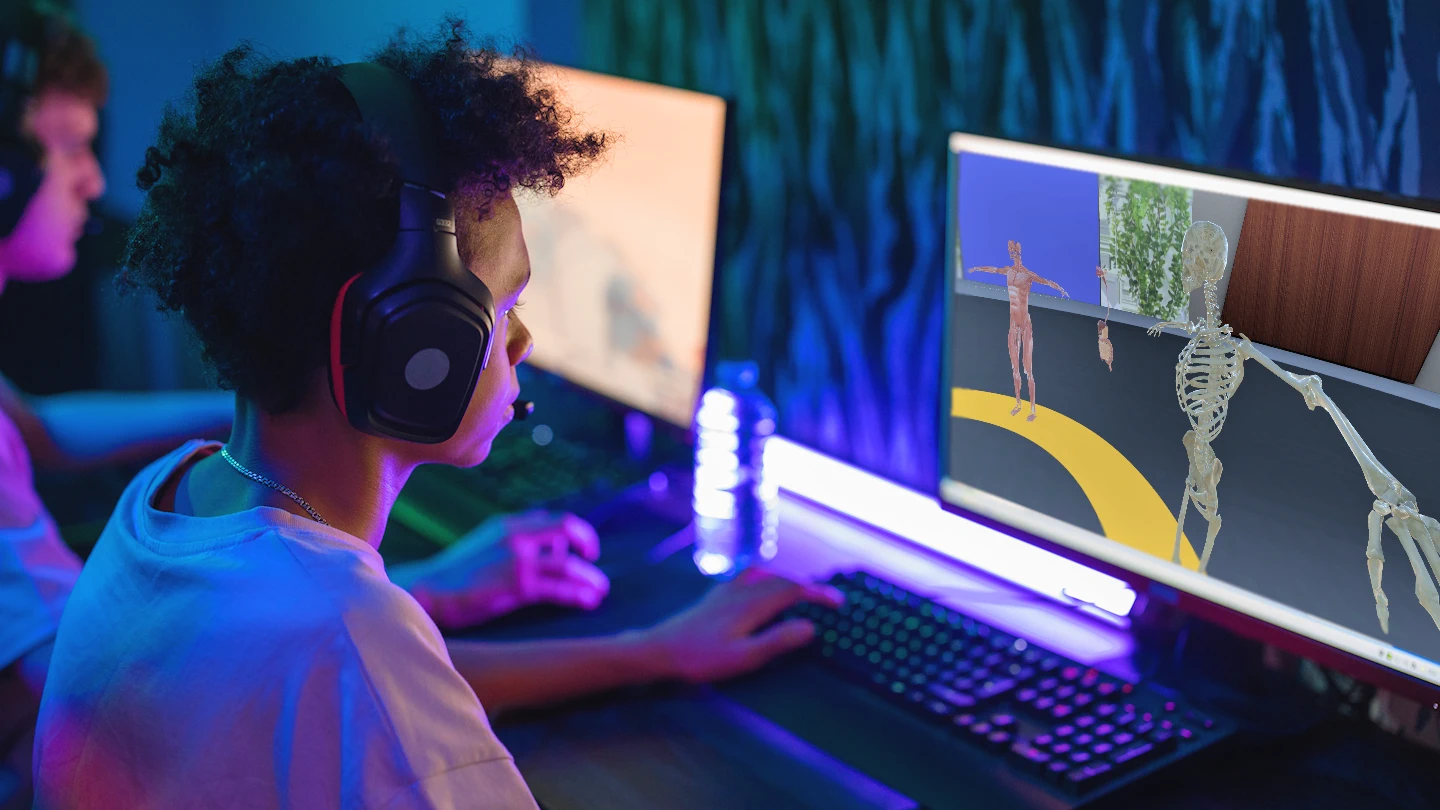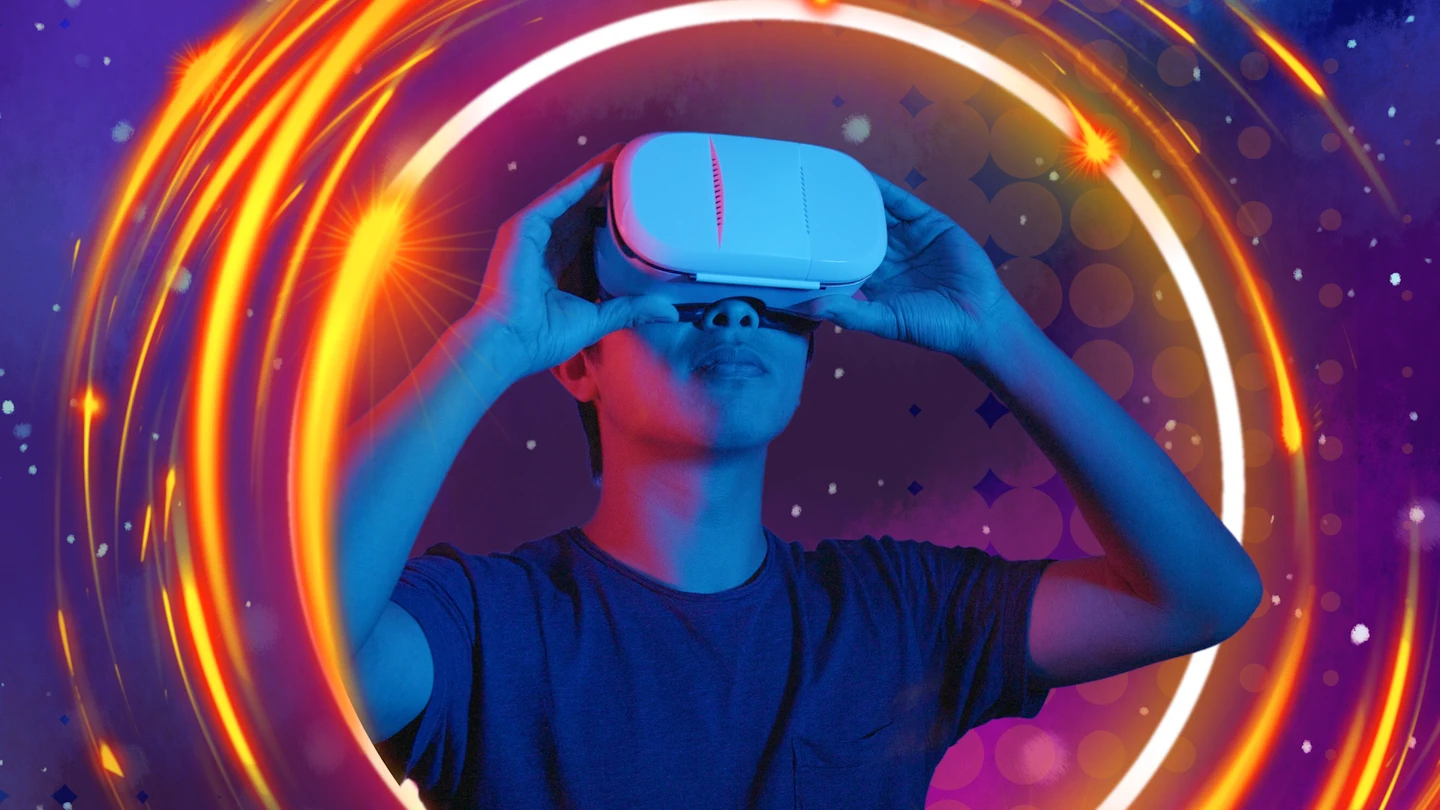In an era where technology is seamlessly integrated into the fabric of education, Virtual Reality (VR) and Augmented Reality (AR) have emerged as transformative tools reshaping the learning landscape. Tailoring immersive and enriched educational experiences, VR and AR have begun flourishing within K-12 classrooms, unlocking unprecedented avenues of engagement and exploration.
However, as these innovative technologies blossom, they bring along a bouquet of misconceptions that often cloud judgment and impede their effective implementation. This article aims to unveil the truths, debunk common myths, and clarify the profound potentials of VR and AR in nurturing the educational journeys of K-12 students.
1: VR/AR is too technical for young learners
Myth: VR and AR technologies are considered highly technical, causing a difficult learning curve and making it unsuitable for young K-12 learners.
Reality:
- VR/AR technologies are designed to be user-friendly.
- They ensure accessibility and engagement for all age groups, including K-12 students.
- Developers create intuitive interfaces and immersive experiences.
- Such designs resonate with the curiosity and adaptability of young minds.
- Students can easily navigate, interact, and learn in virtual or augmented environments.
2: VR/AR learning is highly expensive
Myth: Using VR and AR for learning is often believed to involve high costs.
Reality:
- Initial setup might require an investment, but affordable options have flourished.
- Various educational apps/platforms offer low-cost or free VR/AR educational experiences.
- Schools can utilize shared devices and community resources to optimize costs.
- This allows for enriching and immersive learning experiences despite limited budgets.
- The evolution of resources debunks the myth of prohibitive expenses in VR/AR education.
3: VR/AR is solely for gaming purposes
Myth: VR and AR technologies are often viewed exclusively as tools for the gaming industry.
Reality:
- VR and AR have found significant applications beyond gaming, especially in education.
- They facilitate immersive learning environments, transcending traditional educational limits.
- VR/AR can bring abstract concepts to life, revisit historical periods, and visually explain scientific phenomena.
- These technologies foster a more prosperous, multi-dimensional educational approach, promising an era of more interactive and engaging learning experiences.
4: VR/AR causes health issues
Myth: It’s often believed that VR and AR technologies can lead to health issues like eyestrain or motion sickness.
Reality:
- It’s important to consider health implications, but efforts are in place to mitigate potential risks.
- Manufacturers prioritize user comfort and safety in device designs.
- Features like blue light filters and adjustable settings are integrated for enhanced safety.
- Guidelines advocate for balanced screen time, regular breaks, and correct device usage.
- These measures ensure VR and AR learning remains a healthy and pleasurable student experience.
5: VR/AR learning is distracting for students
Myth: VR and AR learning environments are often perceived as distractions that divert students’ focus from educational goals.
Reality:
- Immersive technologies like VR/AR can actually enhance focus and engagement.
- They captivate students with interactive and meaningful experiences aligned with educational objectives.
- VR and AR create a learning ecosystem that encourages interaction with educational content.
- They allow students to explore concepts deeply and at their own pace.
- This approach promotes a concentrated and enriched learning environment, contradicting the notion of distraction.
6: Limited educational content is available for VR/AR
Myth: It is believed that there needs to be more diverse and significant educational content available in VR/AR technologies.
Reality:
- A growing repository of VR/AR educational materials is continuously being enriched.
- The content caters to a vast array of subjects and curricula.
- Collaboration among developers, educators, and institutions is leading to curating varied content, including historical explorations, scientific simulations, artistic expressions, and language learning.
- A wealth of resources is available, accommodating different learning styles and preferences and facilitating a comprehensive and diverse educational approach through VR/AR.
7: VR/AR is unsafe for students
Myth: There’s a prevailing belief that VR/AR technologies expose students to significant vulnerabilities and safety risks.
Reality:
- Strong safety protocols and guidelines have been established to ensure a secure learning environment in VR/AR.
- Features such as content filtering, customized privacy settings, and monitored interactions are integrated for student safety.
- Through thoughtful technology design and responsible usage guidelines, VR/AR education prioritizes student well-being.
- The goal is to create a protective and conducive learning atmosphere, mitigating undue risks and vulnerabilities.
8: VR/AR learning is isolating
Myth: VR/AR learning is often seen as isolating, enclosing learners in virtual worlds and detaching them from real-world interactions.
Reality:
- Many VR/AR educational experiences now emphasize communal and collaborative learning.
- Technologies facilitate interactive sessions, group explorations, and global classroom connections.
- VR/AR enables students to interact and collaborate beyond physical boundaries, enhancing social interaction.
- VR/AR helps cultivate collective learning experiences, dispelling the idea of isolation and fostering a global educational community.
9: VR/AR doesn’t support learning objectives
Myth: VR/AR technologies do not align well with essential educational learning objectives.
Reality:
- VR/AR can be potent tools in achieving educational goals enriching curricula with immersive content.
- They allow for the customization of learning experiences to align with various educational objectives.
- VR/AR facilitates tailored instruction that resonates with diverse learner needs and preferences.
- They vividly visualize abstract concepts, promoting deeper understanding and retention.
- VR/AR acts as innovative tools that support and enhance learning objectives in education.
10: VR/AR is just a passing trend
Myth: VR/AR technologies are often dismissed as fleeting trends in the educational landscape.
Reality:
- VR/AR has demonstrated sustained growth and a transforming role in education.
- These technologies enhance teaching/learning methodologies with immersive, interactive experiences.
- Their ability to adapt to diverse educational needs and continuous advancements highlight their potential longevity.
- The dedication of educators, developers, and institutions emphasizes VR/AR’s substantial role in future education, transcending a transient phenomenon status.
11: VR/AR requires extensive training for teachers
Myth: Integrating VR/AR in education is thought to require rigorous training for teachers.
Reality:
- Many VR/AR tools feature user-friendly interfaces, promoting intuitive use and easing the learning process.
- Various supportive resources and communities exist to assist educators in adapting to these technologies.
- Such assistance makes the transition smoother, mitigating the need for exhaustive training.
12: VR/AR education is impersonal
Myth: VR/AR in education is often seen as creating an impersonal learning environment.
Reality:
- VR/AR technologies can actually enhance the connection between learners and teachers.
- Customizable VR/AR experiences allow for addressing individual student needs more effectively.
- This facilitates more personalized guidance and support from educators, promoting a more tailored and connected learning experience.
13: VR/AR only benefits STEAM subjects
Myth: The benefits of VR/AR technologies in education are often thought to be limited to STEAM subjects.
Reality:
- While VR/AR greatly benefits STEAM education, their influence extends beyond these areas.
- Humanities, arts, and various other disciplines also benefit from the immersive and engaging aspects of VR/AR.
- This enables a more diversified and well-rounded application of VR/AR in education, enhancing multiple subject areas.
14: VR/AR promotes passive learning
Myth: VR/AR learning is often perceived as promoting a passive learning experience.
Reality:
- VR/AR technologies encourage active participation from learners.
- They promote curiosity, exploration, and hands-on interaction.
- VR/AR facilitates an engaging learning process that fosters active involvement and learning from the students.
Conclusion
In navigating the realms of VR and AR in education, dispelling prevalent misconceptions is imperative to unveil the true potential of these transformative technologies. This journey of clarification aims to foster a more informed and open-minded approach, encouraging educators, students, and parents to embrace VR/AR as powerful catalysts for enriched learning experiences.
Let’s allow the essence of these technological marvels to flourish, cultivating educational environments that are as immersive, engaging, and boundless as the worlds they unlock in the service of learning and exploration.
Frequently Asked Questions
Is VR/AR too technical for young learners to use?
No, many VR/AR educational tools are designed to be user-friendly, allowing learners of all ages to engage with the technology effectively.
Is VR/AR learning highly expensive?
While some initial costs may be incurred, various affordable options, resources, and shared devices make VR/AR learning increasingly accessible.
Is VR/AR only useful for gaming?
No, VR/AR has vast educational applications ranging from historical explorations to scientific simulations beyond its usage in gaming.
Does VR/AR cause health issues?
While there might be minor health concerns, proper guidelines and usage can mitigate risks, ensuring a safe learning environment.
Is VR/AR learning distracting for students?
Rather than being distracting, VR/AR can enhance focus and engagement by providing immersive and interactive learning experiences.
Is educational content limited in VR/AR platforms?
No, there is a wide array of content available, catering to various subjects and curricula, ensuring a diverse learning experience.
Is VR/AR unsafe for students?
With implemented safety features like content filtering and privacy settings, VR/AR environments aim to ensure the utmost safety for students.
Does VR/AR learning promote isolation?
No, VR/AR encourages interactive and collaborative learning experiences, promoting social interaction and community learning.
Does VR/AR align with educational learning objectives?
Yes, VR/AR technologies can be tailored to suit various educational objectives, enhancing the learning process.
Is VR/AR just a passing trend in education?
The continual evolution and adoption of VR/AR in educational settings indicate their sustained relevance and impact on the learning environment.



